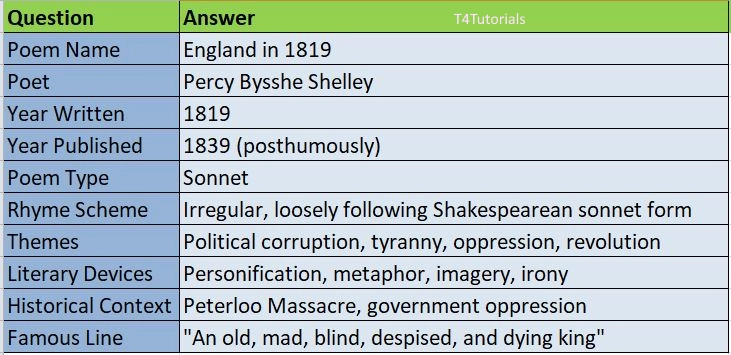Summary:
Percy Bysshe Shelley’s England in 1819 is a powerful political sonnet that criticizes the state of England under the rule of King George III and the corrupt ruling class. The poem was inspired by the oppressive political climate of the time, particularly the Peterloo Massacre, where peaceful protesters demanding reforms were violently suppressed by the government. Shelley describes England as a nation suffering under a decayed and corrupt monarchy. The king is portrayed as “old, mad, blind, despised, and dying,” while the ruling elite are “leech-like” figures who drain the life from the people. The army and church are also depicted as corrupt institutions that contribute to the suffering of the common people. Despite the grim picture painted in the poem, Shelley hints at the possibility of revolution and change, suggesting that something new and powerful may emerge from this period of decay. His vision aligns with the Romantic belief in the power of the people to overthrow oppression and create a better future. England in 1819 remains a significant poem in the history of political literature, serving as a critique of tyranny and a call for reform.
10
Score: 0
Attempted: 0/10
Subscribe
| Question | Answer |
| Poem Name | England in 1819 |
| Poet | Percy Bysshe Shelley |
| Year Written | 1819 |
| Year Published | 1839 (posthumously) |
| Poem Type | Sonnet |
| Rhyme Scheme | Irregular, loosely following Shakespearean sonnet form |
| Themes | Political corruption, tyranny, oppression, revolution |
| Literary Devices | Personification, metaphor, imagery, irony |
| Historical Context | Peterloo Massacre, government oppression |
| Famous Line | “An old, mad, blind, despised, and dying king” |